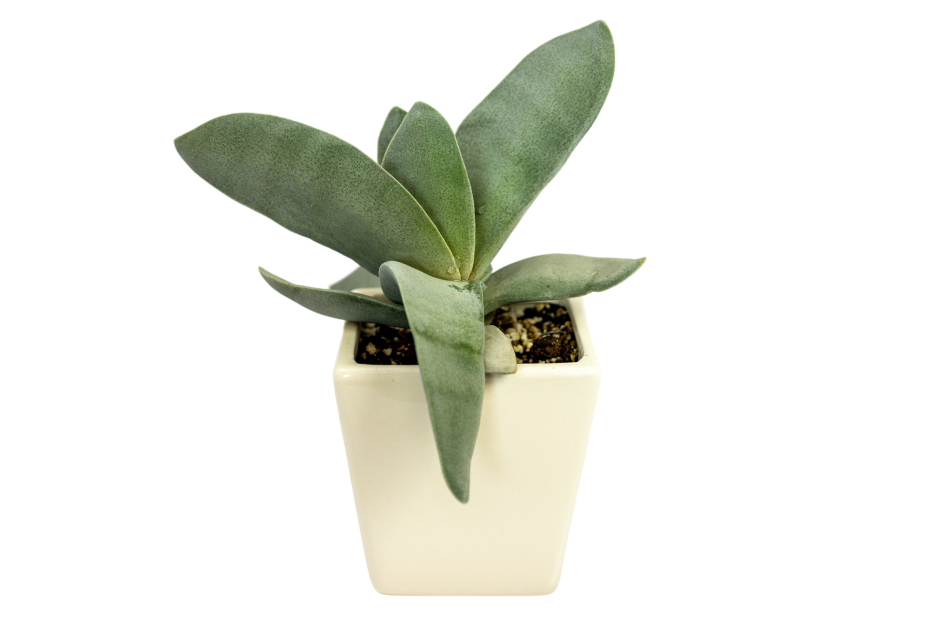
The Crassula Perfoliata var. Falcata, commonly known as the Propeller Plant, is a striking succulent that is sure to grab attention with its unique, fan-like leaves that resemble a propeller. Native to South Africa, this plant is a member of the Crassulaceae family and is a relatively low-maintenance houseplant that thrives in bright light and well-drained soil. Here’s everything you need to know about how to care for your Crassula Perfoliata var. Falcata.
The Crassula Perfoliata var. Falcata loves bright, indirect light and can tolerate some direct sunlight. It thrives in a sunny spot, such as near a south- or west-facing window. However, too much direct sunlight can scorch the leaves, so it’s important to monitor the plant for signs of sunburn, such as brown spots or crispy edges.
If the plant isn’t getting enough light, it may become leggy, and the leaves may lose their vibrant color. If possible, provide it with around 4-6 hours of indirect sunlight each day to keep it happy and healthy.
Like most succulents, the Propeller Plant prefers to dry out between waterings. To prevent overwatering, allow the top 1-2 inches of soil to dry out completely before watering again. During the growing season (spring and summer), you may need to water more frequently, but always ensure the soil is well-drained and that excess water doesn’t accumulate in the pot.
In the winter months, the plant’s growth slows down, and it requires less water. Reduce watering to avoid root rot, which can occur if the plant’s roots are left sitting in water for too long. Always check the soil moisture before watering to ensure you’re not overwatering.
Crassula Perfoliata var. Falcata prefers warm temperatures and does best in environments ranging from 60°F to 85°F (15°C to 29°C). It’s important to keep the plant away from cold drafts or sudden temperature fluctuations, as it can be sensitive to the cold. Avoid placing the plant in areas where temperatures fall below 50°F (10°C), as this can harm it.
This succulent is adapted to dry environments, so it doesn’t require high humidity. In fact, it prefers low humidity levels, which makes it well-suited for typical indoor environments. However, if the air in your home is excessively dry, you can occasionally mist the plant or place it on a humidity tray to increase moisture around it.
The Propeller Plant thrives in well-draining, gritty soil. A cactus or succulent mix works well, but you can also add perlite or sand to a regular potting mix to improve drainage. The key is to ensure that water doesn’t accumulate at the bottom of the pot, as this can lead to root rot.
Fertilize your Crassula Perfoliata once a month during the growing season (spring and summer) with a balanced, diluted liquid fertilizer designed for succulents. Avoid fertilizing during the fall and winter months when the plant is dormant. Over-fertilizing can lead to leggy growth and a decrease in the plant's overall health.
Crassula Perfoliata var. Falcata is a relatively low-maintenance plant, but occasional pruning can help maintain its shape and encourage healthy growth. If the plant becomes too tall or leggy, you can trim back any unwanted stems. Use clean, sharp scissors or pruning shears to make the cuts.
You should also remove any dead or damaged leaves to keep the plant looking neat. Additionally, wiping the leaves with a soft cloth can help prevent dust buildup, which can block sunlight and reduce the plant’s ability to photosynthesize.
The Propeller Plant grows slowly, so it doesn’t require frequent repotting. You can typically repot it every 1-2 years or when the plant outgrows its pot. Choose a pot that is only slightly larger than the current one to prevent overwatering, as too much soil can hold excess moisture around the roots.
Repotting is best done in the spring or early summer when the plant is actively growing. Be sure to use fresh, well-draining soil, and gently loosen the roots if they have become root-bound. After repotting, avoid watering the plant for a few days to allow the roots to settle in.
The Crassula Perfoliata var. Falcata is considered non-toxic to pets. This makes it a safe choice for homes with cats or dogs. However, while it’s not toxic, it’s always a good idea to prevent pets from chewing on the plant, as it may cause some digestive upset if consumed in large quantities.
The Propeller Plant can be propagated through leaf or stem cuttings. To propagate, take a healthy leaf or stem cutting and allow it to dry out for a few days to form a callus over the cut end. This helps prevent rot when the cutting is placed in soil.
Once the cutting has callused, plant it in a well-draining potting mix. Keep the soil lightly moist but not soggy, and place the cutting in a bright spot with indirect light. After a few weeks, the cutting should begin to root and develop new growth.